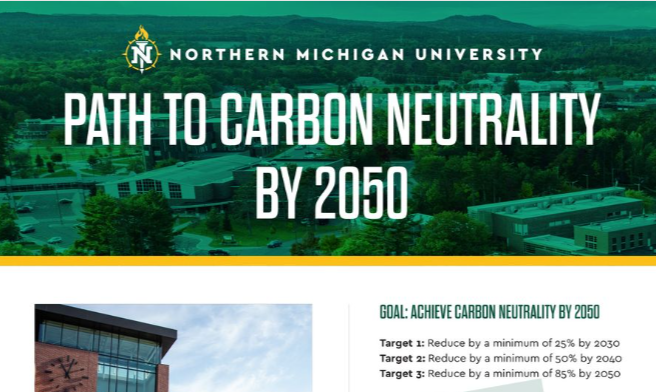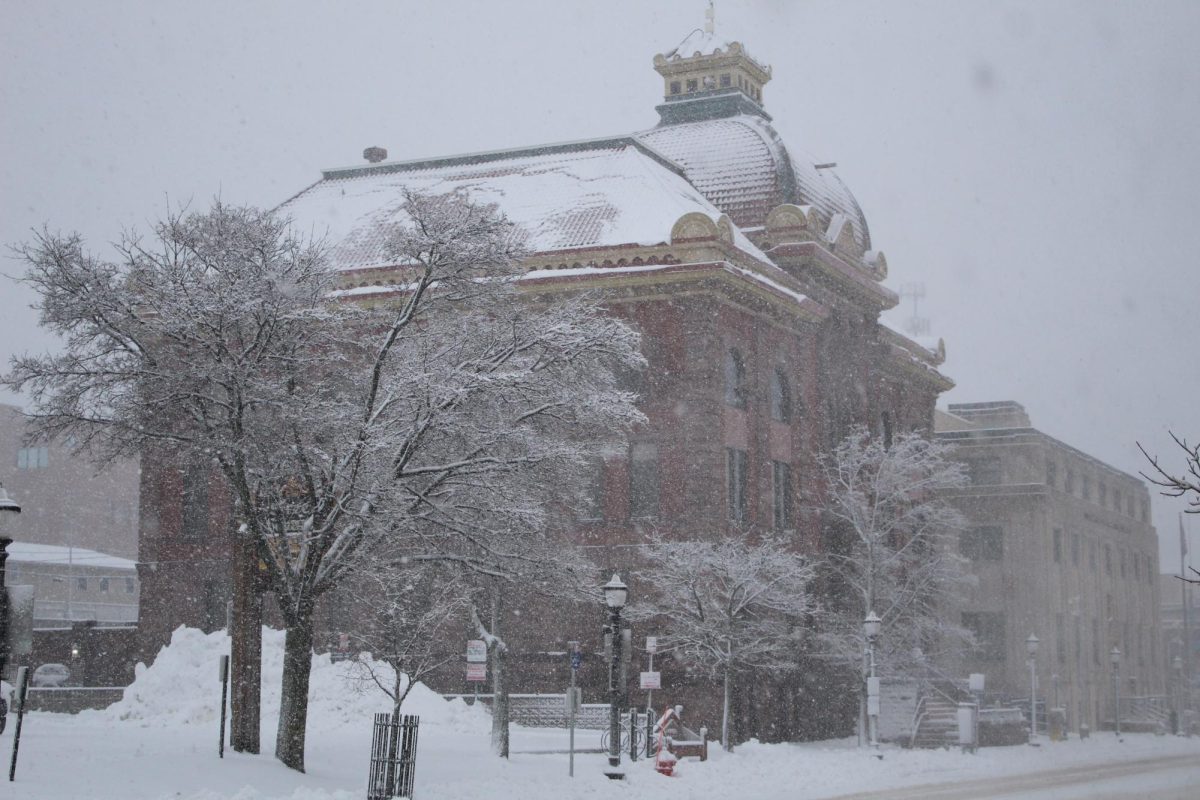Northern has recently unveiled plans to reach carbon neutrality on campus by 2050. According to their Draft Carbon Neutrality Plan, the goal has been divided into three sub-targets, including a 25% reduction by 2030, a 50% reduction by 2040 and the final 85% reduction by 2050. The draft also outlines specific plans to reduce carbon emissions, with the percentage of emissions and cost with each plan attached.
With that information, the North Wind Editorial Board sat down this week to look through the draft and share our opinion.
First of all, the idea of Northern working to cut its carbon emissions is a positive thing. Treating the environment with care, especially as temperatures tick hotter and hotter, should be a high priority for all universities. Having a tentative list of strategies is a great way to begin the fight against climate change.
Of course, cutting carbon emissions is a task that is easier said than done. The estimated costs associated with Northern’s plan are quite high, reaching well into tens of millions of dollars. A common feeling shared within the Editorial Board was that they will “believe it when they see it” in regard to the plan as a whole.
Indeed, the draft is not exactly perfect. Despite the highlighted projects, one criticism of the plan was that it was too vague. Certain strategies are listed as “dependent on the economy,” while others are dependent on eqipment.
The question of whether the plan is even enough also arose. One project to be completed by 2030 was expanding the no-mow zone on campus to 10-15%. Criticisms of this project were that more land could be used for the zone, and that Northern could realistically reduce the area mowed this week if they wanted to. Members of the board also pointed out that the draft stated that Northern has reduced its carbon emissions by 30% since 2010, raising the questions of why there has not been more progress in the last 13 years, and if that pace is enough to reach the goal of carbon neutrality by 2050.
The plan also mentions turning 10-15% of Northern’s cars to electric vehicles. This was also criticized for the ways electric cars harm the environment. Instead, some posited that improving Northern’s grocery shuttle alongside electric vehicles would benefit the environment and the student population greatly.
However, the draft was not without its positives. Members of the Editorial Board acknowledged that reaching carbon neutrality will take time, so splitting the projects up by decade and setting the plan up in a step-by-step way was a good idea. Other specific projects, such as transitioning campus lights to LEDs or replacing old ice machines, were touted as beneficial to both the environment and day-to-day life on campus. Adding compost systems and removing buildings that require large amounts of maintenance, such as Spalding, were also praised.
Overall, Northern taking steps to improve their carbon footprint is a welcome sight in the fight against climate change, while parts of the plan leave much to be desired. The Editorial board’s “believe it when we see it” mindset is hard to shake, though seeing Northern follow through with these plans would be a well-received initiative.


























